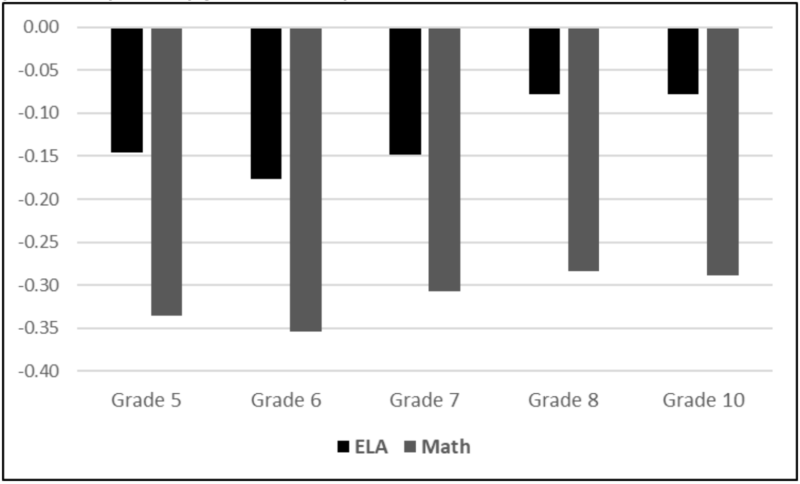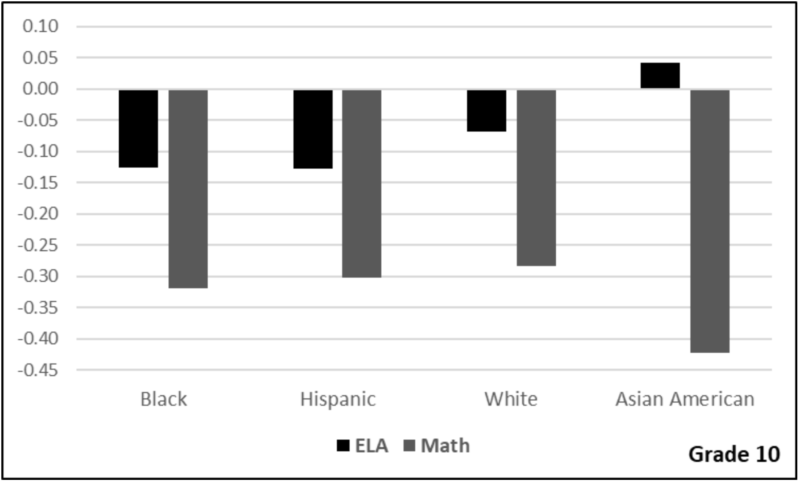It was a joy to see graduation ceremonies getting back to normal this June. Huge congrats to the graduating high school class of 2022. From their sophomore year on, students in this class have endured profound disruption, from hastily developed remote instruction to endless streams of canceled social gatherings and rites of passage.
Dances, sports, and hanging with friends in person all fell by the wayside. So did academics. Many struggled to learn math online. Foreign language via remote instruction was often a lost cause. And many skills typically honed in high school were abandoned: debate, public speaking, group projects to foster collaboration, internships to prepare students for careers—the list goes on.
The seniors graduating this month have overcome much hardship, but they are exiting the K–12 system without any reasonable assurance that they’ve been made whole from missing at least two full years of normal academic and social opportunities. The truth is, we do not yet fully know how many of this year’s graduating seniors are heading out into college or the workforce unprepared.
Most of the research on learning loss focuses on grades 3–8, the lower grade levels tested by required state exams. We’re only starting to see some data emerge from 10th grade state test scores and other high-school-specific measurements, and it’s alarming, to say the least.
Research out of Ohio shows that middle and high student math scores dropped below expected levels this year. Valdimir Kogan, a political science professor at Ohio State University, said the effects of pandemic learning disruptions on high school students are substantial—perhaps even more substantial than the losses relative to typical learning gains seen at the lower grades.
Kogan’s Ohio research also shows that while equity concerns should be at the forefront, high school students of all races fell behind in 10th grade math.
Figure 1. Changes in standardized scaled scores in 2020-21 compared to prepandemic years, by grade and subject, in Ohio
Figure 2. Changes in standardized scaled scores in 2020-21 compared to prepandemic years for selected grades, by student race/ethnicity, in Ohio
With such significant, negative impacts in higher grades and fewer years to recover before graduation, the future academic trajectory of these students is in jeopardy. Chronic absences from class have skyrocketed as high schoolers take advantage of the hot job market, but many of those jobs are unlikely to lead to family-sustaining careers. Given the alarming assessment results for middle schoolers, many more cohorts of future graduates are likely to need extra help and guidance.
Left unaddressed, these learning losses may have long-lasting economic impacts. “Unless steps are taken to address unfinished learning, today’s students may earn $49,000 to $61,000 less over their lifetime owing to the impact of the pandemic on their schooling,” said a report last year from consulting firm McKinsey & Company. “The impact on the U.S. economy could amount to $128 billion to $188 billion every year as this cohort enters the workforce.”
With each graduating class, steps can be taken to avoid those predictions. The next five years are critical, and we need a national effort to focus on solutions. Some of those include the following:
Data and research: States should commit to transparent data and research reporting the immediate and long-term progress of high-school-aged students.
Funding: States or the federal government should establish a flexible pandemic education recovery fund to support long-term career and educational needs for the Covid generation. Federal pandemic relief money that districts have not yet spent could support intensive college-prep tutoring and career pathways programs. Community groups could be paid to run these programs if districts cannot provide them.
Reinvent high school: More than ever, high school students need more career-relevant learning, sharper academic preparation for higher education, available and effective mental health support, and stronger peer-to-adult relationships. It’s past time to reinvent American high schools.
The situation this June 2022 is one of joy for the thousands of students graduating and their families. Many will recover and make their way forward despite the challenges, but too many will not.






